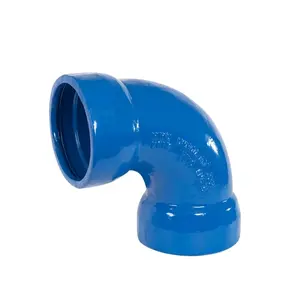
SS316 Stainless Steel Single Ferrule Female Connector Hydraulic Compression Fitting DIN2353 ISO8434.1


Factory Low Price ISO2531 EN545 Standard DI Flanged Fittings Flanged Bend Elbow Ductile Iron Pipe Fittings





















Ductile iron fittings are a pivotal category within the piping industry, serving as essential connectors within a vast array of pipe systems. These fittings are crafted from ductile cast iron, a material known for its strength and durability, making them suitable for both commercial and residential applications. The versatility of ductile iron pipe fittings allows them to be used in various settings, accommodating different types of fluids and gases.
The range of ductile pipe fittings includes numerous shapes and sizes, each designed to fulfill a specific function within a pipe system. Common types include di pipe flange and ductile iron pipe coupling, which are used to connect pipes securely. These fittings are integral to systems that manage water supply, sewage, and gas distribution. The ductile iron pipe mechanical joint is another critical component, ensuring a leak-proof seal and ease of assembly in complex pipe networks.
Ductile iron, the primary material for these fittings, boasts excellent tensile strength and corrosion resistance. Unlike other materials, ductile fittings can withstand high pressure and are less likely to crack under stress. This makes them an ideal choice for systems that require a robust solution, such as municipal water lines and industrial processes. The AWWA C110 and AWWA C153 standards further ensure that these fittings meet the necessary durability and quality specifications.
Design considerations for ductile iron fittings are governed by international standards such as ISO 2531. These standards dictate dimensions, tolerances, and mechanical properties, ensuring compatibility and safety across different systems. Specialized designs like cast iron bends and di water fittings are tailored to facilitate directional changes and fluid dynamics within the piping systems, reducing wear and enhancing efficiency.
The production of ductile iron pipes and fittings is geared towards sustainability. Ductile iron is a recyclable material, which means that di pipes and fittings contribute to a circular economy, reducing waste and promoting environmental responsibility. The long lifespan of these components also means less frequent replacement, leading to a reduction in resource consumption over time.
In summary, ductile iron fittings are a fundamental component in modern piping systems, valued for their resilience, adaptability, and compliance with rigorous standards. Their use in various applications underscores the importance of selecting the right fitting for the right purpose, ensuring the integrity and longevity of the entire pipe system.